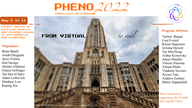Speaker
Description
Real-time quantum simulation of quantum field theory beyond one spatial dimension is always challenging due to limited resources and the imperfect control of noises in the noisy intermediate-scale quantum era. In this work, we develop a novel algorithm and experimentally study the Schwinger effect in (3+1)D. The resource reduction is achieved by introducing several techniques, including background field method, dimension reduction, parity symmetry, etc. Our algorithm is tested on an IBM quantum computer with 5 qubits, where the observed pair production rate is consistent with the theoretical prediction within experimental errors. Our method paves the way towards exploring quantum simulation of other field theory questions beyond one spatial dimension.

